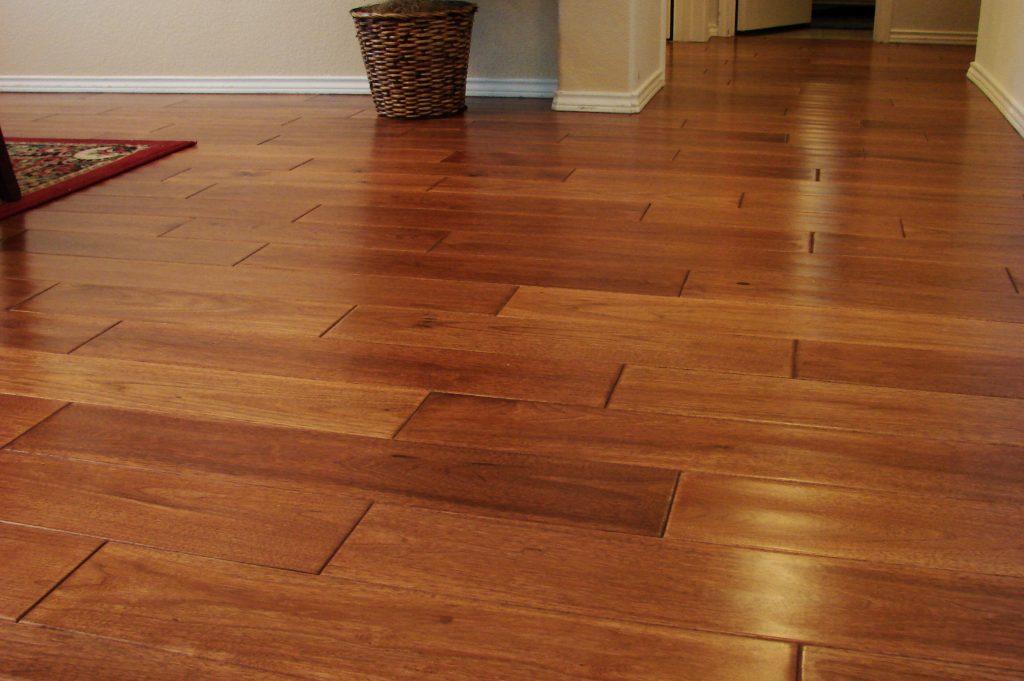
Underfloor heating has become an increasingly popular choice for those of us who are looking to heat our homes effectively in the UK. Not only does investing in underfloor heating kits help make your home extremely warm and comfortable, it is a low maintenance heating option. It also makes a home look more attractive and tidier than a traditional radiator system. However, like any other heating system, there can be instances when underfloor heating systems face issues.
Issues with your underfloor heating can go undetected until they cause a more serious problem. Below is a list of some of the issues that could occur when your underfloor heating goes wrong, including a few warning signs to look out for so you can try and nip any problems in the bud. Luckily – most these issues are fairly easy to fix!
Learn how to spot damage to wood flooring caused by change in temperature
Underfloor heating can affect wooden flooring if used ineffectively. Rapid changes in temperature can cause stress on specific types of wood. If you constantly switch off your underfloor heating system from a really high heat, this can cause strain on the wood and subsequent damage. This can cause the flooring to warp or potentially bow.
The primary warning sign to watch out for is uneven heat distribution. If your underfloor heating system is distributing heat unevenly, this will lead to the wooden floor having gaps between floorboards
Minimise the risk of this happening by ensuring that you hire a qualified and trained professional to install the underfloor heating system for you. Also, choose a better quality of wood for the flooring. The quality of wood used will affect how it reacts to the heat and the rapid changes in temperature that an underfloor heating system can result in.
Tiled flooring can crumble and adhesive can weaken
Rapid change in temperature can affect tiled flooring as well- especially if your heating system is usually at a really high temperature. The mortar that is often used to fix tiles in place will expand. It can also potentially distort if it’s exposed to heat. Look out for tiles at strange angles, or cracked or chipped tiles. To prevent this issue, make sure that you choose a mortar that can tolerate the level of heat that an underfloor heating system provides. This will make it less likely to expand and cause any issues over the course of usage.
Perhaps investing in a programmable thermostat could stop problems that are caused by sudden temperature changes?
Make sure that your installation company tests the underfloor heating system before laying the flooring down
When deciding between water vs electric underfloor heating systems, keep in mind that a professional installer will be able to test both types during the installation process. During this stage, any problems will reveal themselves.
If a fault does develop once the flooring has been laid down and you are unsure of where it originates, you can investigate the issue by contacting a professional. Many underfloor heating system installers will be able to use thermal imaging cameras and testing equipment to pinpoint the issue without lifting up the entire floor. Only those floorboards in the specific area will need to be lifted once the issue has been pinpointed.
Installing underfloor heating in tiled areas can damage wires
Underfloor heating can work really effectively in tiled areas. Wiring systems can be easily damaged as underfloor heating is being installed. This is due to the sharpness of the trowel used to spread the mortar. It can easily rupture the wiring of the heating system. This may only be apparent after some time. If you find that your heating is behaving inconsistently or not functioning, you may need to check for ruptured wires. This issue can be avoided by being extra careful during the installation process. Make sure that the trowel doesn’t come into direct contact with wires.
If you find your heating system malfunctioning- flush the pipes out
The pipes of your heating system may not be working because of debris. Check for any blockages in the pipes that may be causing the malfunction. Even a small amount of debris can cause significant issues.
Having issues with your heating system is not the end of the world! Proper maintenance and care can prevent most problems. Remember to conduct a full health check of your system often- especially as it gets closer to winter.
